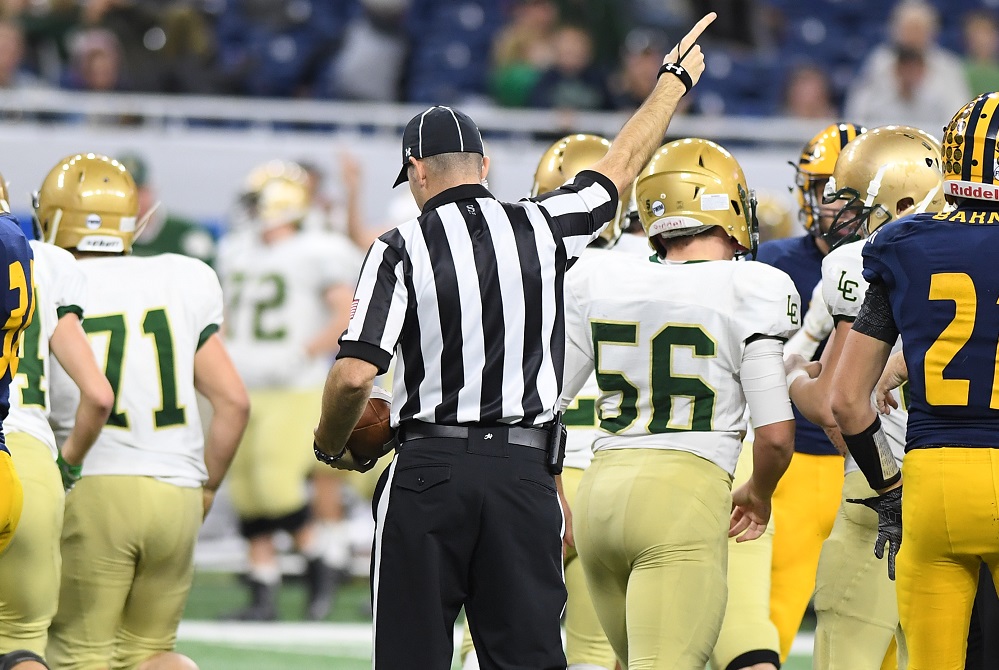
Moment: Marcotte's Return Sets Record
November 12, 2020
By John Johnson
MHSAA Director of Broadcast Properties
Lake Linden-Hubbell took advantage of a Mendon miscue in the 1991 MHSAA Class DD Football Final to prevent a potential score and extend its lead at the time with one the longest defensive scoring plays in a championship game.
After falling behind 8-0 midway through the first quarter, Mendon marched down the field to the Lakes' 8-yard line. On a 3rd-and-8, quarterback Mike Smith rolled left and under pressure lofted an errant pitch which was picked up by Lake Linden linebacker Rick Marcotte, who ran 79 yards the other way on the final play of the first quarter for the longest fumble return in a title match.
It was the second time that weekend the fumble return record had been broken. In the Class C finale the day before, Nate Cierlak of Muskegon Catholic Central returned a fumble 56 yards for a score against Harbor Beach.
Marcotte's score gave the Lakes a 14-0 lead at the time. Smith, however, would engineer a scoring drive off the ensuing kickoff, negotiating the last 10 yards himself to start the comeback for the Hornets, who would score the next 22 points en route to a 30-14 victory and second championship in three years for coach John Schwartz’s squad.

Be the Referee: Pass Interference
By
Geoff Kimmerly
MHSAA.com senior editor
September 2, 2021
This week, MHSAA officials coordinator Sam Davis explains the differences in high school pass interference rules from those at the college and pro levels.
Be The Referee is a series of short messages designed to help educate people on the rules of different sports, to help them better understand the art of officiating, and to recruit officials.
Below is this week's segment – Pass Interference – Listen
One of the big differences between high school football and the college or pro game is how pass interference is called.
In high school, there is no such thing as an “uncatchable” pass. If there is illegal contact by the defender while the ball is in the air, that’s pass interference, no matter where the pass ultimately ends up.
Also – in high school – a defender can “face guard” as long as no contact is made with the receiver. That is not pass interference, even if the defender does not look back for the ball.
Both of those interpretations differ from the college and pro game. Both (of those) levels have an uncatchable exception, and neither allows for face guarding.
Keep that in mind the next time you think you’ve spotted pass interference at the high school level.
Previous editions
Aug. 26: Protocols and Mechanics – Listen

